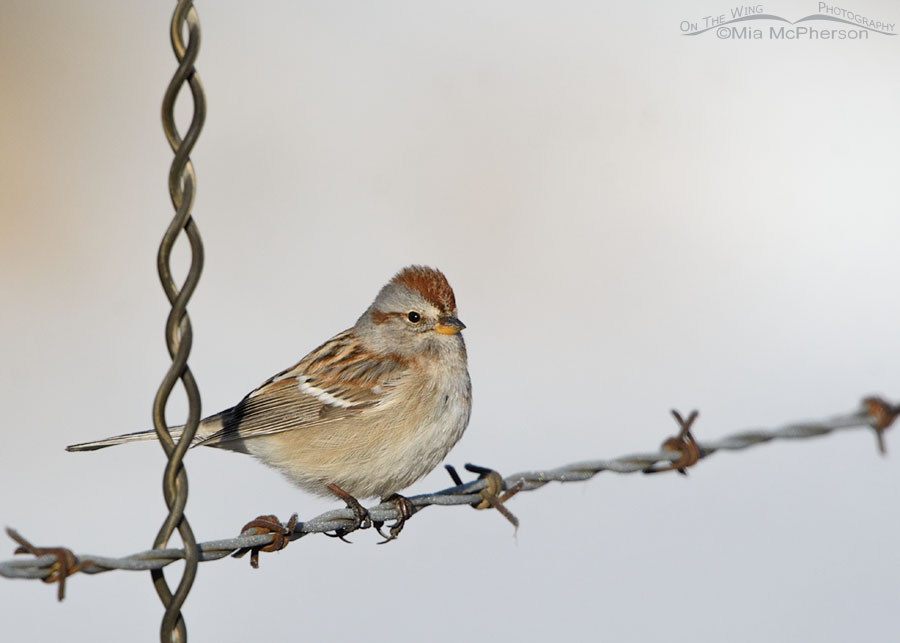 Adult American Tree Sparrow perched on a fence – Nikon D500, f7.1, 1/3200, ISO 640, Nikkor 500mm VR with 1.4x TC, natural light
Adult American Tree Sparrow perched on a fence – Nikon D500, f7.1, 1/3200, ISO 640, Nikkor 500mm VR with 1.4x TC, natural light
Yesterday I was thrilled to spot and photograph an adult American Tree Sparrow high in the Wasatch Mountains.
It was the first time I had seen this species at such a high elevation. Usually I see them at lower elevations of the Salt Lake Valley and the Great Basin. I did a bit of research on eBird and found sightings of American Tree Sparrows at much higher elevations in other states. One sighting was at Cripple Creek, Colorado which is almost 9,500 feet in elevation.
Due to my sighting yesterday and my research I learned that I should be looking for American Tree Sparrows in locations that I haven’t been.
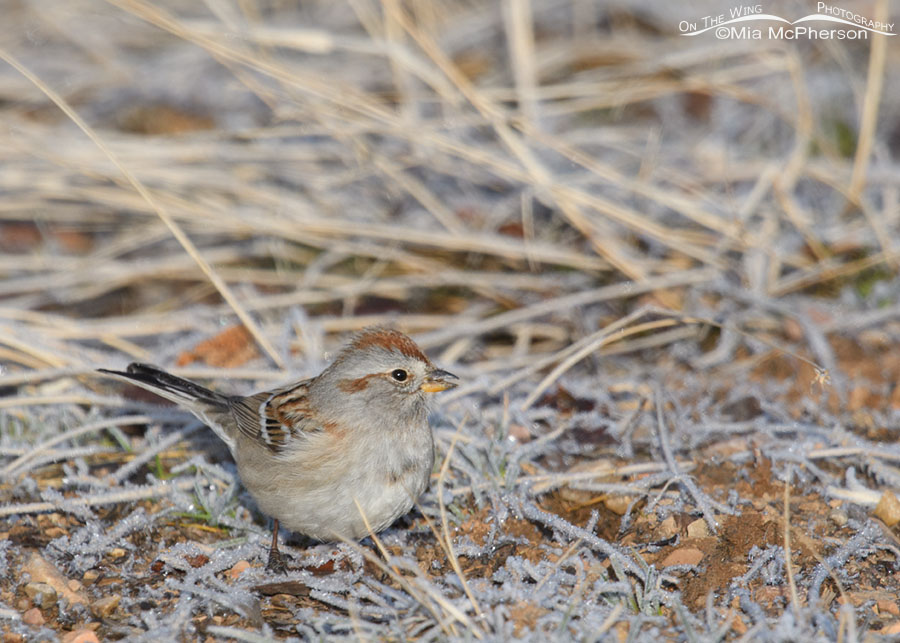 Adult American Tree Sparrow foraging on frosty ground – Nikon D500, f7.1, 1/1600, ISO 640, Nikkor 500mm VR with 1.4x TC, natural light
Adult American Tree Sparrow foraging on frosty ground – Nikon D500, f7.1, 1/1600, ISO 640, Nikkor 500mm VR with 1.4x TC, natural light
The American Tree Sparrow I found yesterday flew from the fence it had been perched on to the edge of the dirt road. The sparrow picked something up from the frosty ground and ate it.
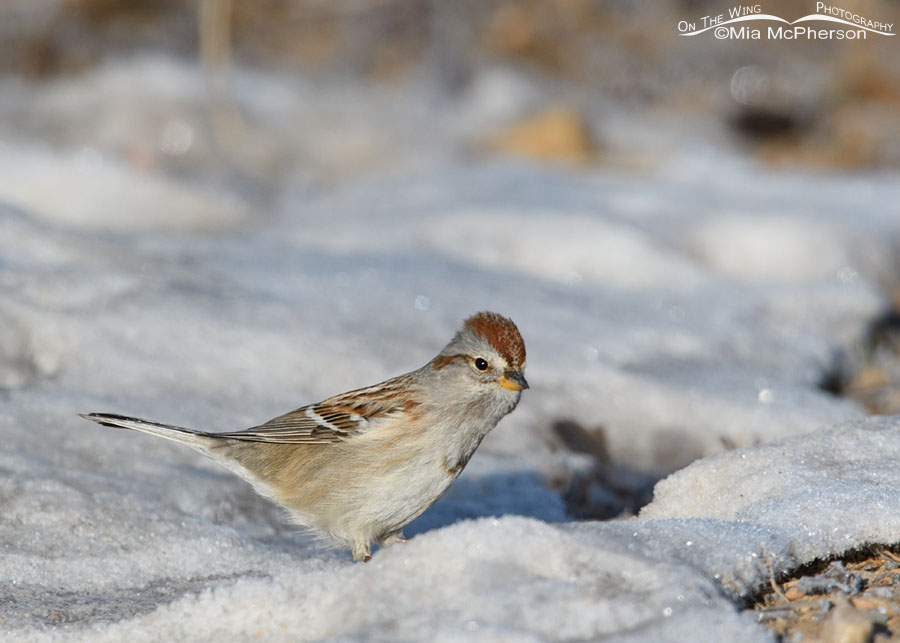 American Tree Sparrow in roadside snow – Nikon D500, f7.1, 1/3200, ISO 640, Nikkor 500mm VR with 1.4x TC, natural light
American Tree Sparrow in roadside snow – Nikon D500, f7.1, 1/3200, ISO 640, Nikkor 500mm VR with 1.4x TC, natural light
Then the sparrow moved and stopped in the snow at the edge of the road. Its rufous crown was raised and the bird seemed curious about something.
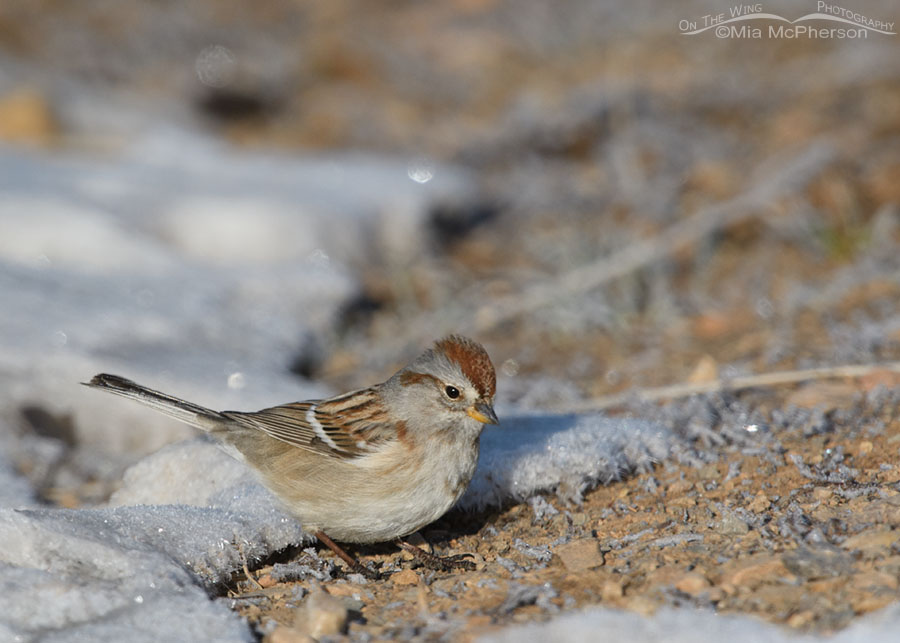 American Tree Sparrow foraging next to a dirt road – Nikon D500, f7.1, 1/2500, ISO 640, Nikkor 500mm VR with 1.4x TC, natural light
American Tree Sparrow foraging next to a dirt road – Nikon D500, f7.1, 1/2500, ISO 640, Nikkor 500mm VR with 1.4x TC, natural light
American Tree Sparrows breed in far northern North America and can be found in northern and central North America during the winter. Typically I start seeing them around late October to early November and my sightings stop in February when they leave on migration and head towards their breeding grounds. This American Tree Sparrow may be my latest sighting of this species. (Update: I have seen this species as late as March 17th.)
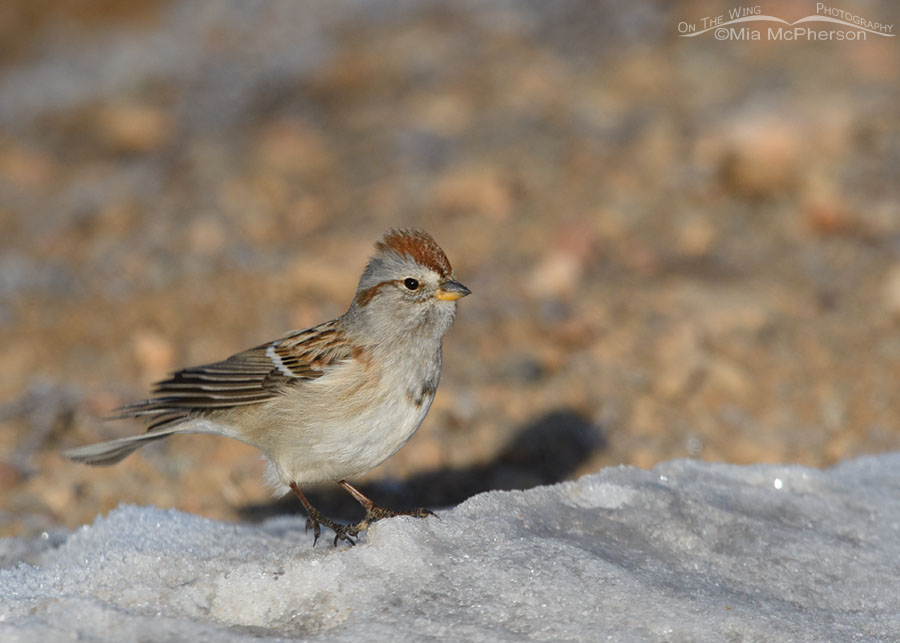 Excited American Tree Sparrow – Nikon D500, f7.1, 1/2500, ISO 640, Nikkor 500mm VR with 1.4x TC, natural light
Excited American Tree Sparrow – Nikon D500, f7.1, 1/2500, ISO 640, Nikkor 500mm VR with 1.4x TC, natural light
I wasn’t thinking about that though as I photographed this sparrow as it foraged along the road. I was thinking about how beautiful it was in the morning light and about how fortunate I was to have it in my viewfinder.
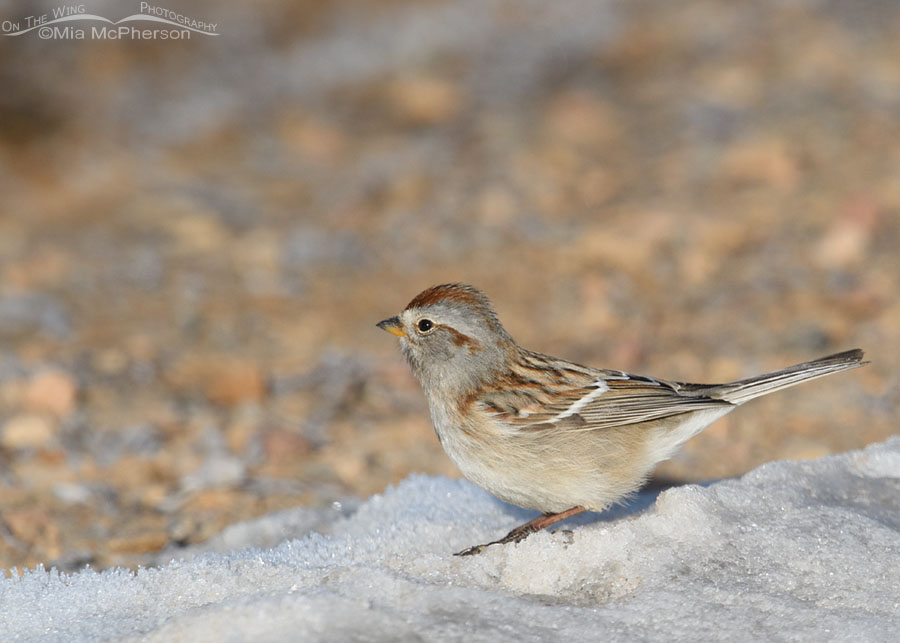 American Tree Sparrow high in the Wasatch Mountains – Nikon D500, f7.1, 1/2000, ISO 640, Nikkor 500mm VR with 1.4x TC, natural light
American Tree Sparrow high in the Wasatch Mountains – Nikon D500, f7.1, 1/2000, ISO 640, Nikkor 500mm VR with 1.4x TC, natural light
This American Tree Sparrow was silent as it foraged for seeds that may have been exposed when the dirt road was plowed. I would have enjoyed hearing it call.
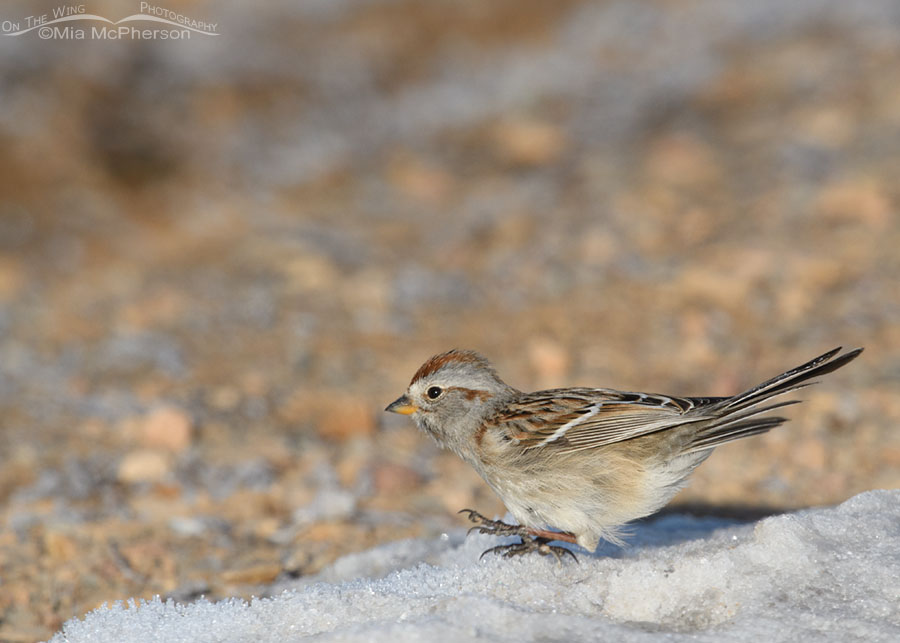 American Tree Sparrow in the snow – Nikon D500, f7.1, 1/2000, ISO 640, Nikkor 500mm VR with 1.4x TC, natural light
American Tree Sparrow in the snow – Nikon D500, f7.1, 1/2000, ISO 640, Nikkor 500mm VR with 1.4x TC, natural light
I only had this sparrow in my viewfinder for a little over a minute during which time I took sixty images of it foraging, looking around, and walking on the snow.


Roadside American Tree Sparrow adult – Nikon D500, f7.1, 1/2500, ISO 640, Nikkor 500mm VR with 1.4x TC, natural light
Click and pull the white arrow to the left to reveal some of the ID features I use to determine that this is an American Tree Sparrow.
I get asked what these sparrows are frequently during the winter so I’ve worked up these before and after images above that shows the key ID features I look for when I am identifying this species. Perhaps it will help other people to identify American Tree Sparrows when they see a little brown bird with a rufous eyeline and crest with a bicolored bill.
I’m not sure I will see any more American Tree Sparrows until fall migration which makes me kind of sad because I adore these sparrows. I will miss them while they are gone.
Life is good.
Mia
Click here to view more of my American Tree Sparrow photos plus facts and information about this species.


Such a handsome bird – and great photos!
What an extraordinary series of pics! The detail and colors are incredible. I love the eye contact in every shot. Thanks Mia.
Lovely photos, I like the frost crystals too. I probably see them and think they are a immature white crowned sparrow.
What a charmer. I am so very glad that your eagle eyes allowed you to hone in on it.
Beautiful. Over the last 5 or 6 years I have been seeing less & less of them in winter. None at all this winter. I love hearing them as well.